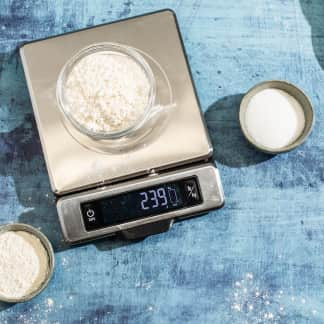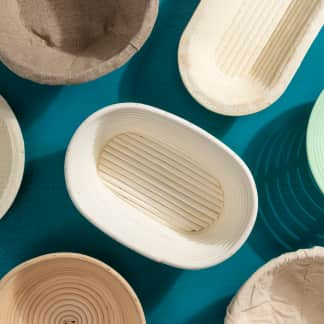Precision scales, often referred to as gram scales, provide measurements to a fraction of a gram. When used to measure small amounts of ingredients while cooking or baking, they ensure accuracy and consistency. Our favorite is the American Weigh Scale Digital Pocket Scale. It's easy to use and was able to measure accurately to within 0.02 grams.
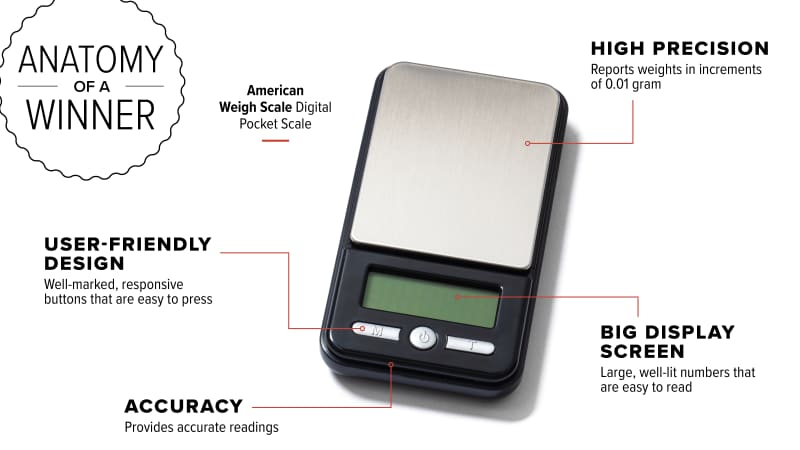
Using a digital kitchen scale while cooking or baking is more precise than measuring solid ingredients by volume. Our longtime favorite scales give readings to a single gram and are capable of weighing items up to about 5 kilograms (or 11 pounds). However, there are times when greater precision is necessary. When weighing small amounts of ingredients such as yeast, salt, or xanthan gum, you need a precision scale that goes to a fraction of a gram, as a deviation of a few tenths of a gram can yield a difference in the finished product.
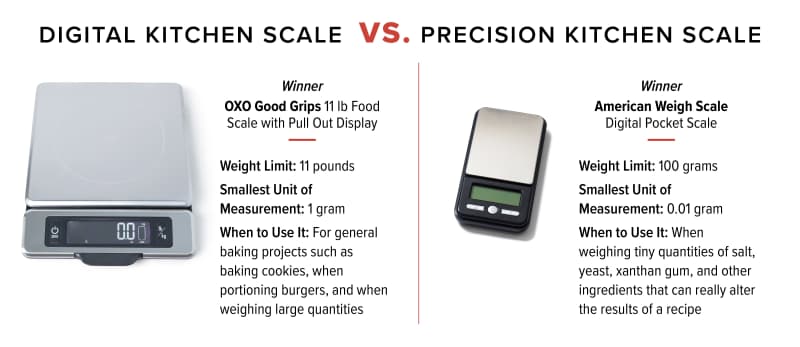
Enter: precision kitchen scales, which are more precise and sensitive than your standard kitchen scales. They can generally measure in both metric or imperial and report increments as small as 0.01 gram. The tradeoff for that precision is a smaller maximum capacity, generally between just 100 grams (3.5 ounces) and 1,000 grams (2.2 pounds). Accordingly, the weighing platform is typically just 2 to 4 inches in each direction, too small for a large weighing bowl. For those reasons, a precision scale cannot replace your regular kitchen scale; it should be used in conjunction with it.
What to Look For
- High Precision: The main feature of these scales is precision, so a model that only read in increments of 0.5 gram wasn’t a significant improvement over our regular kitchen scale. We preferred models that reported weights in increments of 0.01 gram. (Note that the smallest weight the most sensitive scale could register was 0.03 gram.)
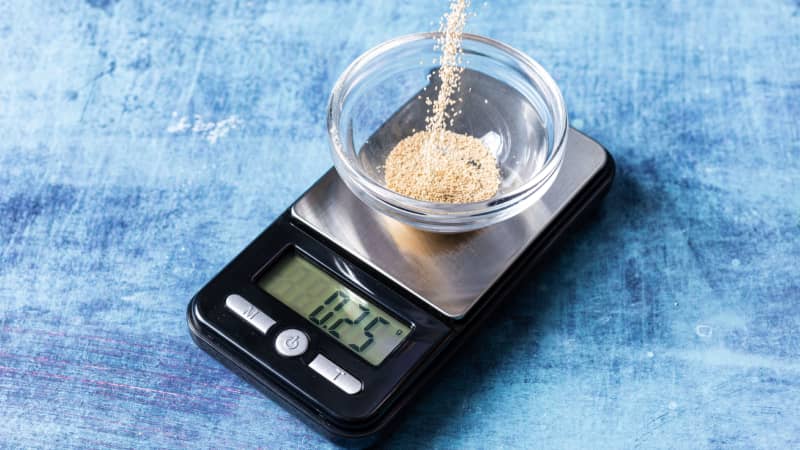
- Accuracy: The scales in our lineup showed varying degrees of accuracy when weighing lab-certified weights. We liked ones that measured closest to their maximum possible accuracy.

- User-Friendly Interface: We preferred easy-to-navigate, clearly labeled interfaces. We preferred larger buttons, as they were easy to read and use when weighing and taring ingredients on the scale. One had tiny buttons that were too stiff to press.
Nice to Have
- Plastic Storage Case: Some scales included a plastic storage case or a plastic cover. We liked both approaches. They helped keep the scales clean in busy kitchens and protected the scale from mishaps while they were stored in a drawer or cabinet.

What to Avoid
- Long Lag Times and Fluttering Numbers: We disliked scales that took too long to settle on a measurement. We also didn’t like models that displayed fluttering numbers, which were hard to read when adding ingredients to the scale incrementally.
- Small Display Screens: Precision kitchen scales are smaller in size than standard scales with roughly 11-pound maximum capacities. Still, some had displays that were too small, so we had to squint a little to read the screen.

The Tests
- Check accuracy of each model with seven lab-certified weights, for a total of 50 tests per model. Repeat after dropping each model onto the counter from a height of 2 inches above.
- Evaluate ease of use and functionality
- Evaluate legibility of screen and buttons
- Splash water on the scale’s surface and check for malfunction
- Pack in bag and swing the bag around, as if taking the scale on a trip where you intend to cook
- Clean scale five times using a damp towel
How We Rated
- Accuracy: We tested each scale's accuracy using a set of lab-certified weights both at the beginning and at the end of testing to assess how close they measured to their maximum possible accuracy.
- Speed: We considered how quickly each scale turned on and reported weights.
- Ease of Use: We evaluated how easy it was to use each to weigh ingredients and change the units of measurement.
- Legibility: We evaluated how easy it was to read the numbers and units of measurement on the digital screens.
- Durability: We checked whether the scales became damaged during testing or durability tests. We also noted if they had plastic covers or cases that offered protection when the scales were not in use.
- Cleanup: We considered whether the scales had design features that made them hard to clean.









